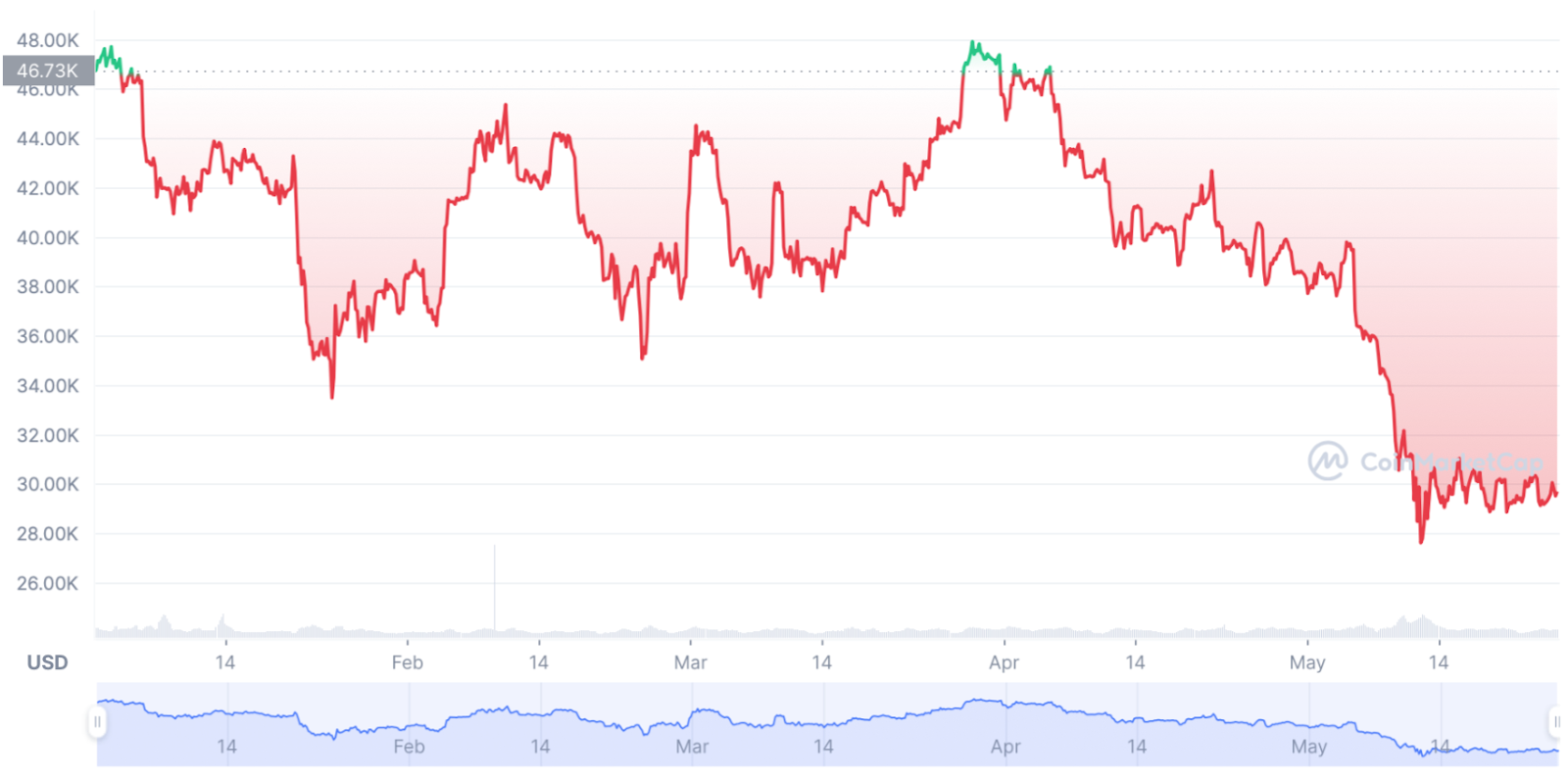
Three decades ago, few if any could have predicted the rise of a new economic powerhouse that would revolutionize the way we trade. Cryptocurrency has and continues to take the world by storm offering mind-blowing opportunities to traders and investors who want their part in this digital gold rush.
Cryptocurrency trading offers you a unique opportunity to trade an alternative market rather than trading stocks or forex. Bitcoin remains the most valuable coin on the market but as every trader will tell you, there is no one fixed price to coins. Crypto trading takes advantage of the constant rising and falling of prices to create massive opportunities for wealth creation.
Since the beginning of May we can observe a significant distrust to the crypto market - the Terra collapse had all of us under a lot of stress. However, as best crypto analysts say, when everyone is selling you should buy. Easier said than done, righ?! That is why it’s important to learn how to avoid buying on highs and dive into the technical details related to trading.
What is a Cryptocurrency Chart?
A cryptocurrency chart provides a visual representation of how a cryptocurrency is doing in the market. A crypto chart is a very important tool for traders because it offers a variety of information that traders can use in making decisions. Cryptocurrency charts can show past performances, current price position and this can be across specific and varied timeframes from as small as seconds to even years and more.
Essentially a cryptocurrency chart is a graphic display of the prices, volume, and general movement of the market. The prices are represented on the chart with either a line, a graph, a bar chart, and the Japanese candlestick which we will go into later in this article. A cryptocurrency chart also shows the pair of currencies being traded; their opening, high, low, and closing price.
Why is a Cryptocurrency Chart Important?
Cryptocurrency charts offer traders the opportunity to trade beyond a whim. It provides great tools and analysis that can help them decide to buy, sell, or HODL. The cryptocurrency chart can help you see if the market is going great (bullish, a term used to describe a positive move in the market). And a chart can also signal when the market isn’t doing so well (Bearish, a term used to describe a decrease or drop in value).
With a cryptocurrency chart, you can always have access to the up and down movement of crypto at any point in time. You can see the profit and loss margins from previous market movements and these can be great tools in predicting future movements in the market.
Knowing how to read crypto charts is a powerful skill every trader must learn and perfect. It will prove invaluable in your trading. This is often called technical analysis.
Technical Analysis of Cryptocurrency Charts
Technical analysis is a tool, or method, used to predict the future movement of a cryptocurrency. It is a great and dynamic way to get an in-depth perspective into the market price and the basis for reading crypto charts.
Different Time Frames for Crypto Charts
In learning how to read crypto charts, you must know the different and varying time frames that are being used. Here are four of the most popular time frames used on a crypto chart:
15-minute chart
Hourly chart
4-hour chart
Daily chart (1-Day)
What is a Cryptocurrency Market Cap?
In reading crypto charts, you must understand what a cryptocurrency market cap is. The market cap is a well-known term among traders in the stock market.
It is simply the product of the cryptocurrency coin in circulation and the price of the cryptocurrency price.
It is calculated using this formula:
Market cap = Total Coin Supply * Price of each coin.
Market cap is a great indicator to know about the stability of a coin and a very important aspect you must know in learning how to read crypto charts.
To be continued…
Now that we learned some basics, you are ready to examine the chart figures and get closer to becoming a pro investor. We will introduce you to all the behaviour of top charts, in the next chapter of “How to read crypto charts”. Stay tuned…